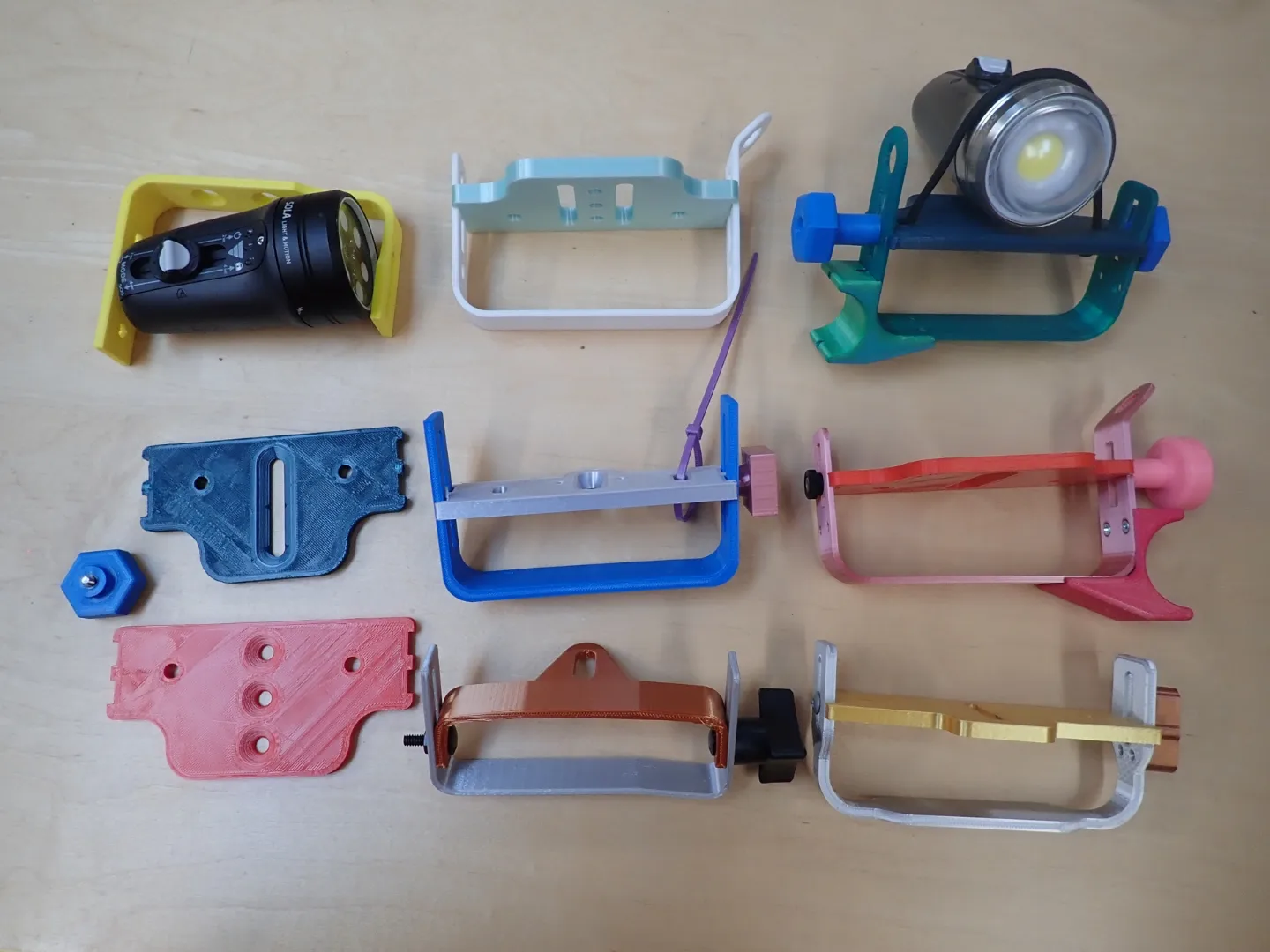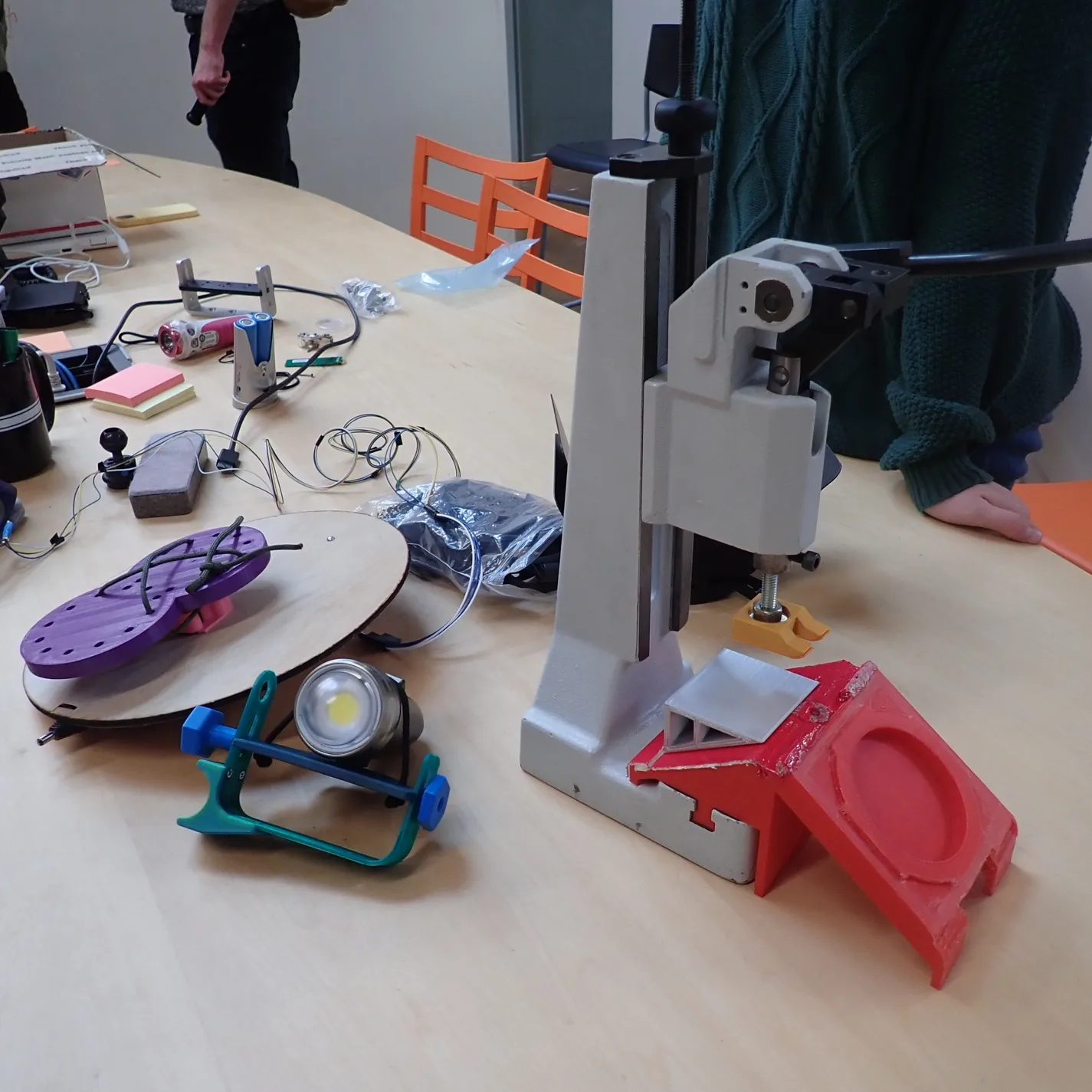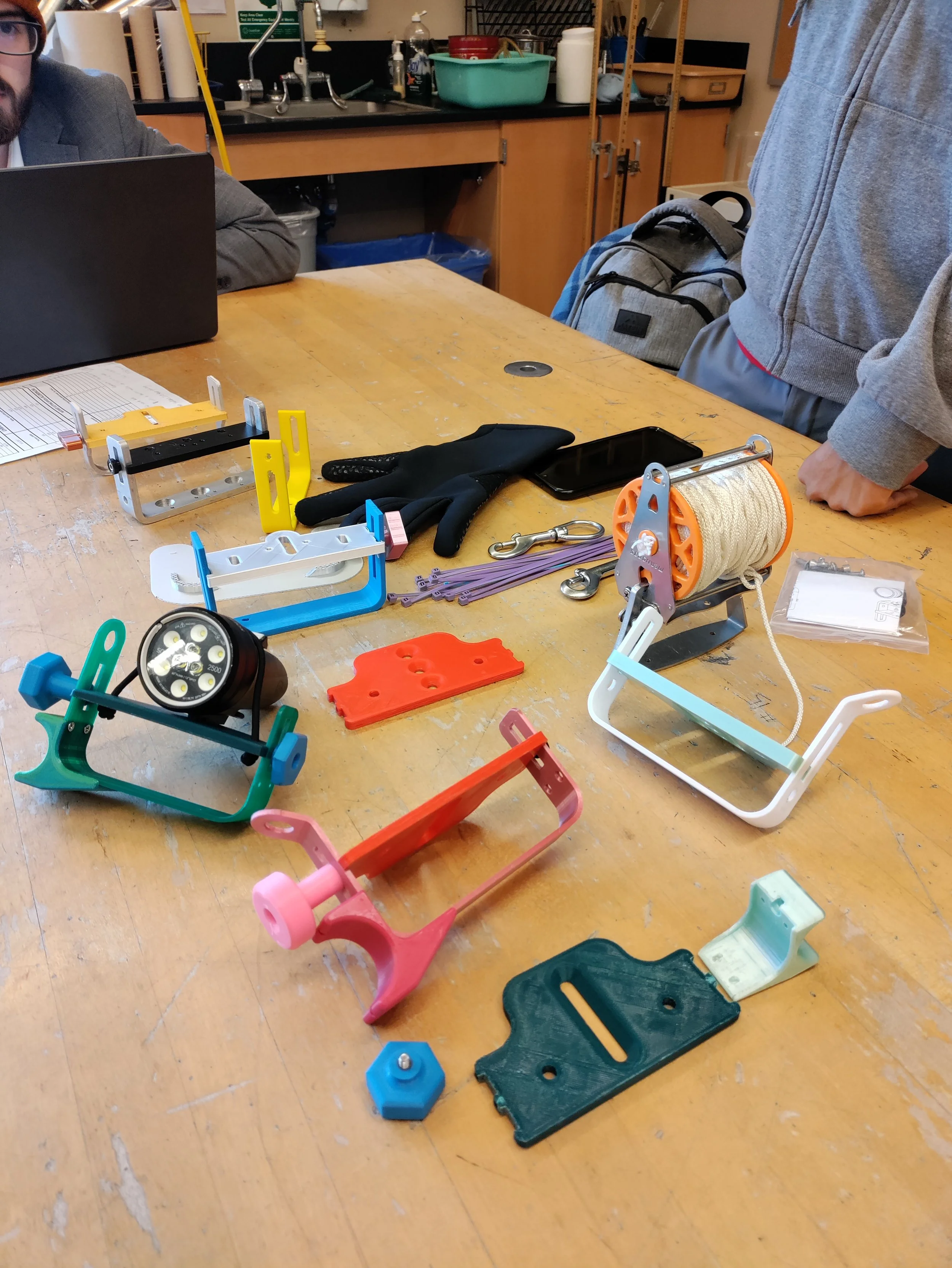
“How do you improve a tool that’s just a bar and a U-bracket?”
This is a collaboration between Monterey Peninsula College (MPC) Engineering Students and Light & Motion. The contents of this project delve into 3D printing and its use in rapid-prototyping and hard surfaces. The end result is to improve on an existing tool by considering the needs of modern users while comparing existing market features. This is a project I’m excited to be a part of; as it is in line with my two worlds directly merging: SCUBA Diving and 3D arts.

Every winter term, Monterey Peninsula College (MPC) offers a 3 week workshop for students who are Engineering majors or are interested in expanding their STEM abilities. The projects in the workshop change each term and are proposed by local companies in various markets. Argos Agricultural Solutions wanted to explore technology in satellite sensors. A fortune cookie company needed machine suggestions to improve efficiency and consistency in manufactering. Last, Light & Motion, had three projects for the students: A device to simplify manufacturing of studio light barn doors, a device to efficiently test light output, and designing a Goodman handle for technical diving. The students are led by 3 professors; each are masters in their own field: Computer Science, Electrical Engineering, Solid Works Design, and Civil Engineering.
My role in this workshop is a Printing lab technician and guest lecturer. I interpret the part(s) that the teams are printing and adjust the settings to best match the part’s purpose. I also maintain & repair any machines during the workshop. Considering all the parts are hard surface parts, the machines must be optimally tuned. I also held lectures within the workshop to pass on knowledge of how they can prepare files for printing. I assisted in printing with all teams, but was more involved with the Goodman handle team for research and dive knowledge.
A huge thank you to Monterey Peninsula College’s Engineering Students and Staff. It was an honor to work alongside you. Hearing salutations such as, “The success of this year’s program was directly related to your care” sends me over the moon. It solidifies my belief that I’m working on a professional level and what I’m doing is important.
All of the students had something special to bring to the workshop. Everyone was supportive of each other. It was really a “team work makes the dream work” manifested.
As the workshop continued, their ability to envision a print strengthened and their input for how parts would print was on par or superseded my input. It boiled down to strength vs print time. They are really finding out what it means to rapid prototype.
the students at first would be amazed that I would leave a print running overnight with no worries. At the end of the workshop, they started to understand all the nuances of setting up a print for success and mirrored that confidence.
In the 10 days that we were printing. The workshop completed 42 prints. 41 of them were successful. The 1 was a risky failure we were willing to bet on.
All parts were given to their respective companies. Each representative has noted that the student’s efforts have accelerated prototyping and can begin release of something more substantial sooner than anticipated. As far as I know, one of the students now works at Light & Motion, other have transferred to their college choice, and others are now entering their higher education classes.
I was pleasantly surprised to see some of the students enrolled in the 3D printing class in spring 2023 :)



